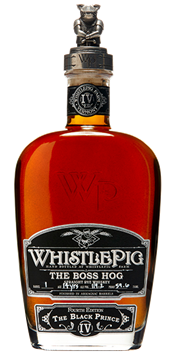For a whiskey brand born during the rising popularity of craft spirits, turning 10 years old in this crowded, competitive marketplace is a significant achievement. For WhistlePig, however, not much has changed during the first decade.
“From the get go, we’ve always wanted to be farm-to-flask, and that hasn’t changed for us,” said Pete Lynch, Assistant Distiller for WhistlePig. “We were the first distillery to do the entire whiskey production on the farm, including aging in our own oak. This method will always be our vision.”
There are many reasons why WhistlePig has evolved into one of the finest rye whiskeys available today, and Lynch recently filled us in on why the brand perfectly captures the true spirit of Vermont.
Does terroir exist in spirits?
Pete Lynch: Absolutely, and for a variety of reasons as well. There are so few people who are doing this whole ‘growing our own grain’ thing, as well as distilling it and aging it in a certain location. I would certainly say that maturation location matters 1,000 percent. Climate has everything to do with how a whiskey develops.
How does terroir exist specifically in WhistlePig?
We use our own oak that we harvest from the surrounding area around our farm. We turn it into barrels and we use that to age our whiskey. It has significantly different impacts on the whiskey than if we were to use the regular white oak from the Ozark mountain range, which is where most barrels come from.
 Boss Hog had a huge year. What’s been the effect Boss Hog had on the brand?
Boss Hog had a huge year. What’s been the effect Boss Hog had on the brand?
It’s pretty much pressured us to continue to overachieve, essentially. You better believe the heat's on for this year’s Boss Hog. We've been working on this year’s Boss Hog for more than a year and a half. Before we even started barreling last year’s Boss Hog, we're thinking three, four, five years down the road.
I think people are going to be pretty pleased with this year’s Boss Hog. We’re working on it right now, actually. It's going beautifully. I think we're going to have another pretty big year!
What makes a great rye whiskey so unique?
That's a tough question right there. I constantly come back to the point that people don't fully understand rye whiskey. I like to say that I'm the most spoiled brat in the world because I get to taste the best and oldest rye whiskeys from all over North America.
People typically think of rye as spicy. It's got a nice graininess to it. However, they don't fully understand the full extent of rye. Rye can be sweet. Rye can be fruity. Rye can be extremely herbaceous. Yeah, rye has a good spice to it, a good graininess, but I could hand you a rye whiskey and a bourbon whiskey and you would think the rye's a bourbon and the bourbon's a rye. It all depends on how it's designed. How it was handled. How it was matured. How it was finished.
I think that as this craft movement evolves, and the big guys start following suit, we're going to see a lot of variety in rye whiskey.
Biggest innovation for WhistlePig?
I would say it probably started with the 12 Year Old World. Essentially, that project involved trialing dozens of casks, all with different finishes. We sent them out to different bartenders around the country to see what they preferred and what they didn't. Then, once we found these casks that not only we preferred, but we crowdsourced as well, then we worked on blending them together. One finish didn't quite do it for us. We wanted to get a more rounded profile. That was the start of our journey.
We love trying new things because you never know when you’re going to stumble across something beautiful.